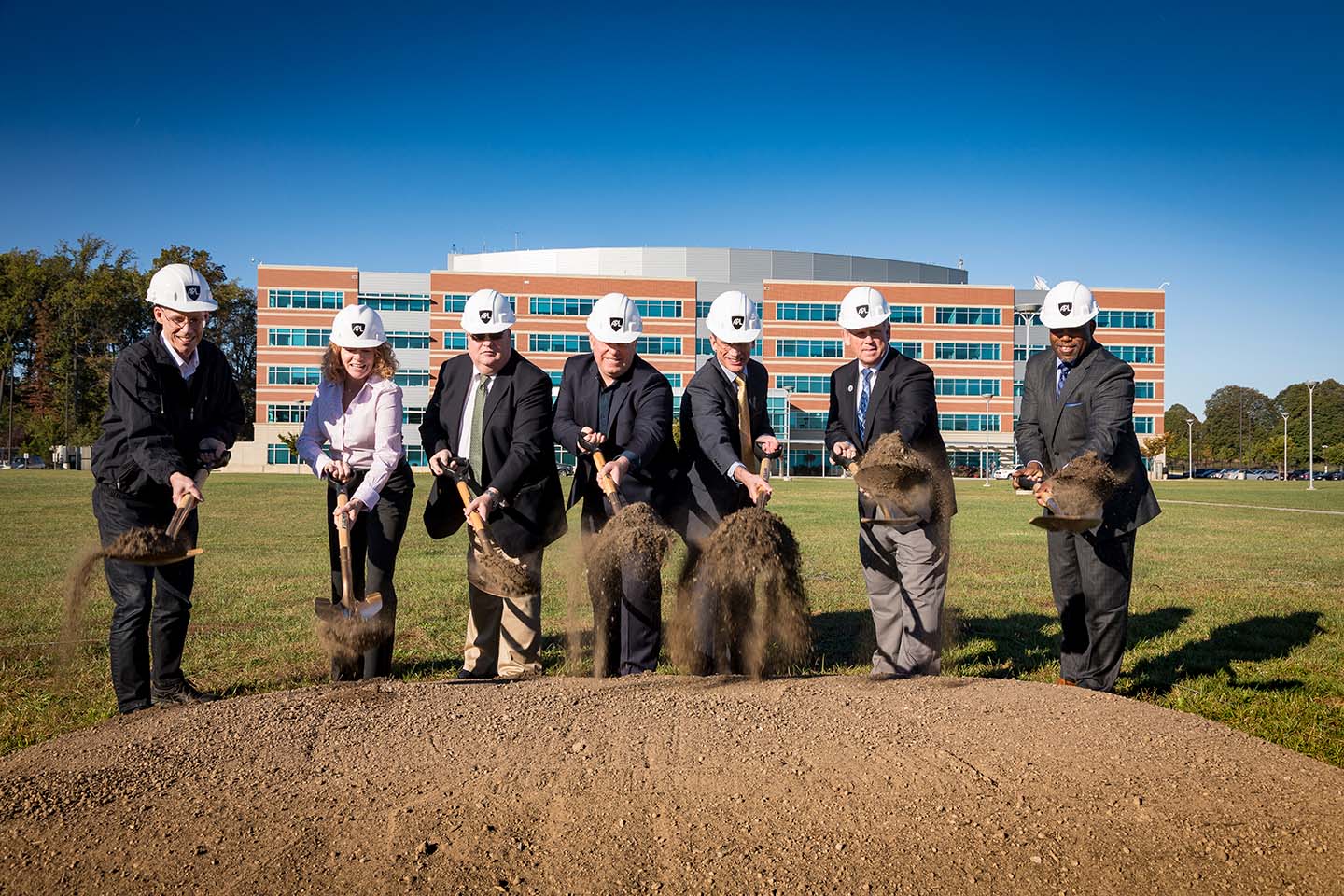Press Release
Johns Hopkins Applied Physics Laboratory Breaks Ground for Research and Development Facility
The Johns Hopkins University Applied Physics Laboratory (APL) in Laurel, Maryland, broke ground Oct. 16 on what will be its largest building, a blend of complex labs and office space that will primarily house APL’s Research and Exploratory Development Department.
Set to open in 2020, the four-story, 263,000-square-foot building will feature an atrium design and concrete structure with a stone, brick and glass exterior. It will house approximately 650 APL staff members and draw researchers from across the Laboratory.
“We always encourage our folks to be bold here at the Lab, and I am excited that this building is going to enable that,” said APL Director Ralph Semmel.
Semmel welcomed Howard County officials and representatives from the construction industry for the groundbreaking. He thanked those in the public sector who have supported the Laboratory’s efforts over the past seven decades, and noted the Lab’s strong partnership with Howard County. The Lab established its Howard County campus in 1954 and is the county’s largest private employer.
“APL has produced many game-changing innovations, and this new building will help it to carry on that tradition,” said Howard County Executive Allan Kittleman. “APL is a vital part of Howard County, and we look forward to the contributions that will come from this space.”
The new building will include updated research laboratories, a 200-person conference room with adjacent conference and breakout spaces, the APL STEM education offices and facilities, and a coffee shop. The building will reflect a modern integrated approach that uses common areas for multidisciplinary collaboration and innovation.
“Our greatest technical achievements are almost always the result of cross-disciplinary collaborations — physicists collaborating with biologists and neuroscientists, materials scientists collaborating with health professionals and space exploration scientists, and similar partnerships,” said Jim Schatz, head of the Lab’s Research and Exploratory Development Department. “We wanted a building that fostered these creative explosions of diverse thinking, and makes it easy for people and ideas to flow freely.”
